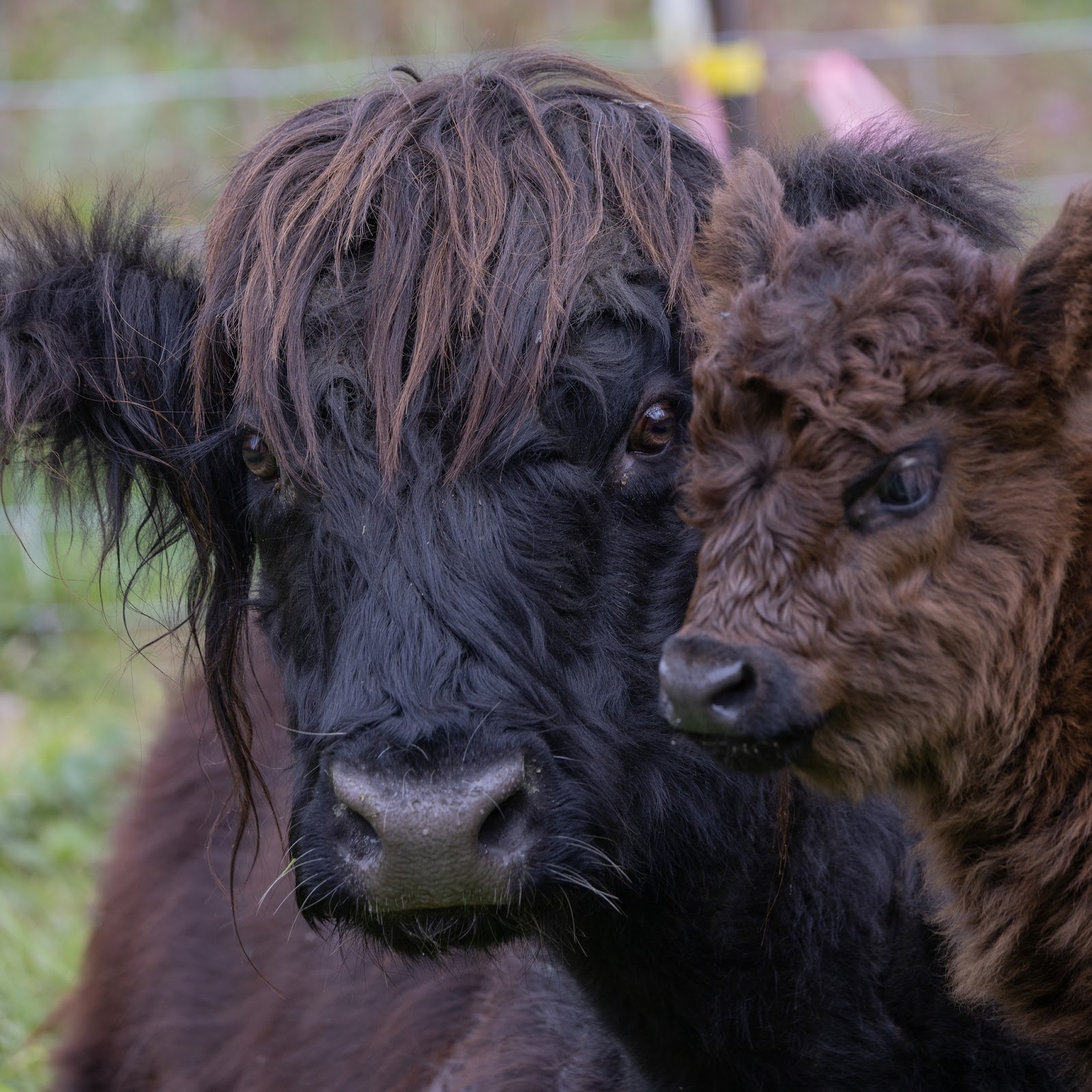During their quarantine period
This section will only benefit anyone who has bought a half grown bovine that will not allow human contact. Human contact to some degree is vital if you are ever to treat or interact with your new bovine. If you have already tried and are at your wits end, some or all of this might be of benefit to you.
As I said in my other posts, we do not proclaim to be bovine experts by no means. We just do what works for us. We have a small operation of about 15 mature head plus babies or juveniles. What works for us will most likely not work for someone with a much bigger operation. So if there is some part of this that will help acclimate your bovine friend to their new home then I am happy to have shared it.
Bulls:
I do not include bulls in this post because I don’t encourage keeping a bull as a pet and if you choose to keep one for breeding I urge you to use extreme caution with them. Although we have never had a bad experience with a highland bull I know where they are at all times when I am in the pasture with them, and I would never turn my back on them. They are taught the same respect as our girls but they are a completely different animal. Please use caution if you choose to keep a bull.
First, by now your new bovine should be in a small paddock/stall about 12 x 12 where they can not get a way from you (you being on the outside of the stall at all times)
What is the plan for your new Bovine?
If they are a breeding prospect and will spend most of their time out in the pasture without much human interaction then feeding and watering during the quarantine period and evaluating their temperament and health is probably all you’ll need to do till it’s time to turn them out. But, if your plan is to have hands on like brushing, grooming, or halter breaking (youngsters)then the following may be of some benefit to you.
Remember to use caution and proceed slowly with new cows. No matter how gentle they seem they still have a mind of their own and can be unpredictable when they feel threatened. Establishing your position within the herd early is at the top of the priority list but gaining their trust is very important as well.
Expectations
Don’t assume because her previous owner was able to brush her all over that you can too. Don’t be disappointed if it doesn’t always work like that. You are a stranger to them until they trust you and you have established your position in the pecking order (which is always at the top).
Each cow/ calf is an individual and expectations for each is different. I would not expect an 8 year old cow to accept the same level of grooming as I would a yearling unless it was done successfully at her previous home. But they do have to be obedient and respectful. My husband can tell you there have been times that I swear after a week said cow is going to a meat sale after her quarantine period is up 🙂 , but that has never happened. Something magical happens in the 30 days. One morning when I go to the barn to work with them, they eagerly moo to me when they hear me talking, and I know they are going to be fine.
Let the training begin
If your new cow/calf accepts touching from day one then you are nearly home. Continue what you are doing and at the end of their quarantine period you should be fine. However, if you reach in to touch them and they kick out or shake their horns/head at you, or run to the farthest corner when they see you, then some of the information here might be of some help. There are lots of ways to achieve the same result, this is just our way.
Pretty much everything is food based. We do not use punishment because cows have a very good memory, if you break their trust by hurting them you’ve confirmed their fear and will have a very long way to go to get back their trust. I have yet to have one that will not settle down somewhat for food, whether it be corn, pellets, beef maker or what ever is used.
If the new bovine will not accept touching in anyway, I use a very long stick that is long enough that the said bovine can not get away from it, even going to the farthest corner of the stall they are in. While they are eating I begin to stroke them with the stick. Sometimes they try to kick it out of my hand and sometimes they run in circles. Either way I continue until they stand still, even if it is only for a few seconds.
I continue this same exercise everyday until they stop resisting. sometimes that’s a couple days and sometimes it weeks. When they stop resisting I add a brush to the end(I have a handy dandy painters telescopic pole that a brush screws on to the tend:) and we start all over. When they begin to enjoy the brush I will try it though the bars of the stall or paddock in my hand. If they don’t kick or threaten with their head/horns I will try approaching them with the brush inside their stall, but only after I am confident they are no longer afraid.
Once you get to this point, collars and halters can be put on without much resistance, if that is what you are working towards, again depending on the age you are working with. New purchases need to be quarantined for 3 to 4 weeks, why not use that time to form a relationship with your new heifer or steer. It is very rewarding when they know your voice and talk back when you round the barn.
Threatening with their horns or head is aggressive and should never be tolerated. Kicking can be displayed for several reasons, one can be aggression, also could be from excitement for food or just seeing their favorite person, or in most cases is done because they were startled, hurt or afraid, and not aggression. For what ever reason just be aware of their kicking range, they can kick to the side and back.
I hope you enjoyed your read, someday you may have a use for some part of it.
Kind regards, Nellie

